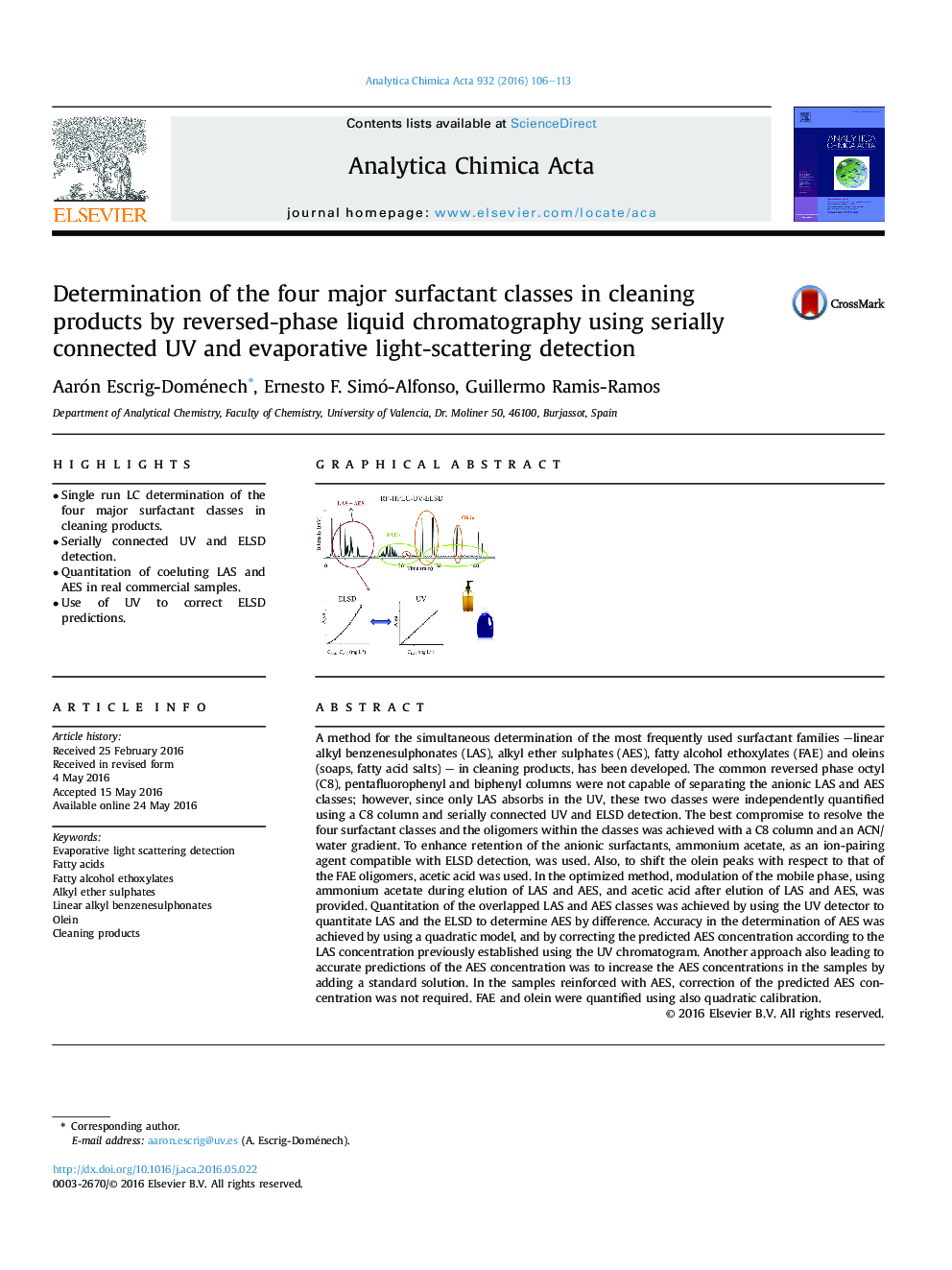| Article ID | Journal | Published Year | Pages | File Type |
|---|---|---|---|---|
| 1162787 | Analytica Chimica Acta | 2016 | 8 Pages |
•Single run LC determination of the four major surfactant classes in cleaning products.•Serially connected UV and ELSD detection.•Quantitation of coeluting LAS and AES in real commercial samples.•Use of UV to correct ELSD predictions.
A method for the simultaneous determination of the most frequently used surfactant families –linear alkyl benzenesulphonates (LAS), alkyl ether sulphates (AES), fatty alcohol ethoxylates (FAE) and oleins (soaps, fatty acid salts) – in cleaning products, has been developed. The common reversed phase octyl (C8), pentafluorophenyl and biphenyl columns were not capable of separating the anionic LAS and AES classes; however, since only LAS absorbs in the UV, these two classes were independently quantified using a C8 column and serially connected UV and ELSD detection. The best compromise to resolve the four surfactant classes and the oligomers within the classes was achieved with a C8 column and an ACN/water gradient. To enhance retention of the anionic surfactants, ammonium acetate, as an ion-pairing agent compatible with ELSD detection, was used. Also, to shift the olein peaks with respect to that of the FAE oligomers, acetic acid was used. In the optimized method, modulation of the mobile phase, using ammonium acetate during elution of LAS and AES, and acetic acid after elution of LAS and AES, was provided. Quantitation of the overlapped LAS and AES classes was achieved by using the UV detector to quantitate LAS and the ELSD to determine AES by difference. Accuracy in the determination of AES was achieved by using a quadratic model, and by correcting the predicted AES concentration according to the LAS concentration previously established using the UV chromatogram. Another approach also leading to accurate predictions of the AES concentration was to increase the AES concentrations in the samples by adding a standard solution. In the samples reinforced with AES, correction of the predicted AES concentration was not required. FAE and olein were quantified using also quadratic calibration.
Graphical abstractFigure optionsDownload full-size imageDownload as PowerPoint slide
